Like many cities, there are certain streets or neighborhoods in Seoul that are famous for specific dishes. There’s Majang-dong’s BBQ street and Sindang-dong’s Ddeokbokki Town.
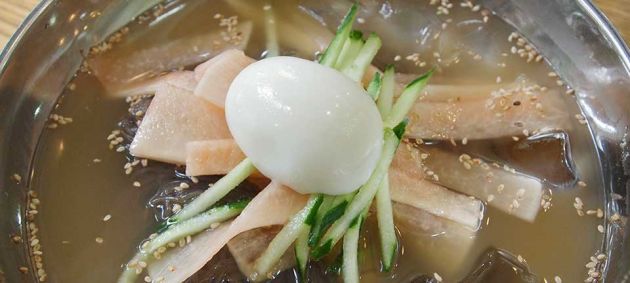
One of my favorite food streets, however, is a street in central Seoul’s Ojang-dong (오장동), which is famous for its naengmyeon Korean cold noodles.
Appropriately, “naengmyeon” translates literally as “cold noodles.” Thin noodles typically made of buckwheat or sweet potato starch are served with slices of cucumber, Asian pears, radish and beef along with a large dollop of red pepper paste.
To help fill you up, half a boiled egg tops it off. Naengmyeon Korean cold noodles are the perfect way to cool off on a hot day, and not just because the cold and tangy broth contains slushy bits of ice.
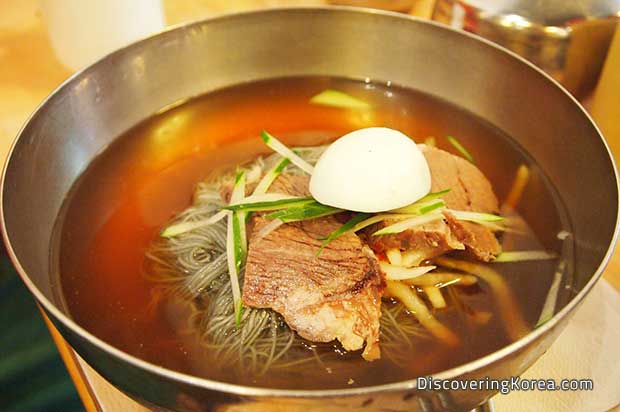
The content and portion-size is also modest and keeps you from feeling too stuffed. For all these reasons, I’m not surprised that supposedly 9 out of every 10 Koreans love their naengmyeon (I’m sure their survey methods were very scientific^^).
Naengmyeon Korean cold noodles are probably the most prominent North Korean contribution to the average Southerner’s diet. In fact, many naengmyeon restaurants bear the names of two prominent northern cities – Pyeongyang and Hamheung.
Typically, Pyeongyang-style naenmyeon is called “mul” or “water” naengmyeon. As the name suggests, it features more broth, but it’s also less spicy and the noodles are made with buckwheat flour.

In contrast, Hamheung-style naenmyeon, which is called “bibim” or “mixed,” has little or no broth but lots of spicy red pepper paste with extra chewy noodles made from sweet potatoes.
Although Korea’s naengmyeon Korean cold noodles come from the North, they became popular in the South shortly after the Korean War.
Remarkably, some of Seoul’s original naengmyeon restaurants in Ojang-dong date from that era. Ojang-dong is located east of Myeong-dong and west of Dongdaemun in Seoul’s central Jung-gu district.
Although a large number of cold noodle restaurants no longer line the street, a few still do brisk business off Mukjeong Park (묵정공원), with long queues of patient customers filling the sidewalk during the hot weeks of summer.
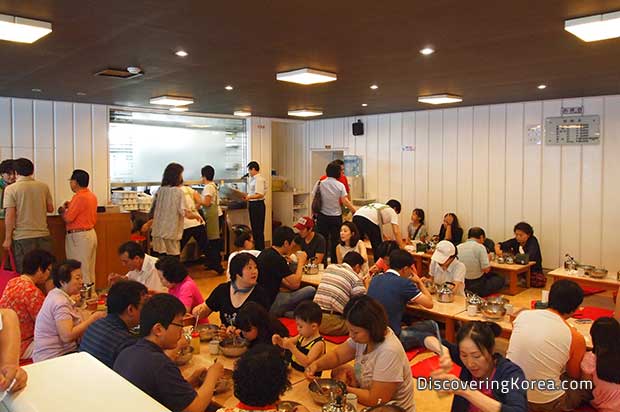
Ojang-dong’s first naengmyeon restaurant, Heungnam House (오장동흥남집), was started back in 1953, the year the Korean Armistice was signed. Set up by North Korean defectors, its time-tested recipe is appreciated by some for its less-spicy sauce.
But if you want some heat with your cold noodles, go next door to Hamheung Naengmyeon (함흥냉면전문집). Also founded by refugees from the North, their prize dish is a hwae or sashimi naengmyeon made with baby stingrays from Korea’s west coast.
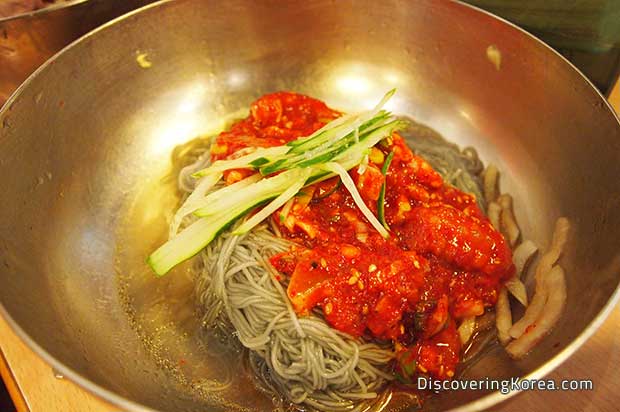
I took a couple of friends with me for lunch recently, and they praised the clean and simple taste of the fish, broth and noodles.
If you go to Ojang-dong, you’re forewarned that none of these restaurants is great for socializing.
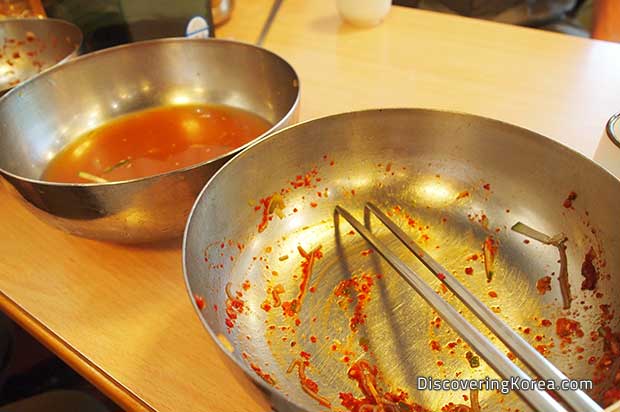
Whether you’re seated on the ground along a low table or at a narrow strip of sit-down tables pushed against the wall, the long line of waiting customers reminds you that once you emit the sound of chopsticks deposited into an empty stainless steel bowl, it’s time to yield your seat for the next hungry customer!
That’s it for Ojang-dong’s naengmyeon Korean cold noodles street. But check back soon when I’ll highlight a few more of Seoul’s favorite themed eat streets!
For Your Information…
| Open: | |
| Admission Price: | Please inquire |
| Address: | Seoul Jung-gu Ojang-dong |
| Directions: | Euljiro 4(sa)-ga Station (#204/#535) on Lines 2 & 5, Exit 8 |
| Phone: | |
| Website: |
About Matt Kelley
Matt Kelly is native of the US Pacific Northwest and is half-Korean by ethnicity. He lived in Korea for five years and has written hundreds of travel guides for Wallpaper, TimeOut, the Boston Globe and Seoul Magazine and was a host for several different variety shows on Korean radio and television.
